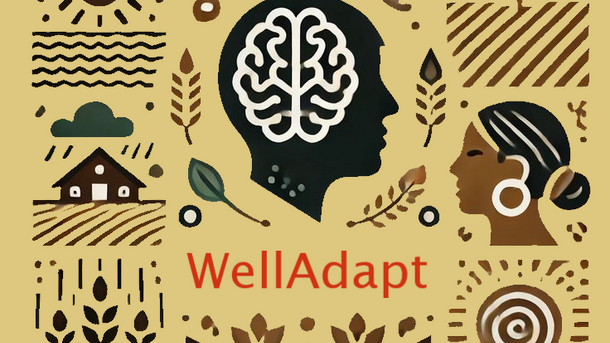


A student excursion report
From 4 to 8 September 2017, 14 students travelled with Dr Roswitha Kirsch-Stracke to the Sauerland-Rothaargebirge Nature Park (South Westphalia). During the five-day excursion, the focus was on tourism and nature conservation projects as well as village development topics in the Lennestadt and Kirchhundem area (Olpe district). Accommodation and starting point for the hikes was the Rucksack Hostel (Rucksackherberge am Rothaarsteig) on the Rothaarsteig in Kirchhundem-Heinsberg. On their hikes, the group also explored regional building culture, expressions of religious life in the landscape and civic projects.
After arriving by train, the first day began at Altenhundem station. Hans Schürrer, former head of the planning and building department of the city of Lennestadt, illustrated the redesign of the station forecourt and market square to the students and accompanied them through the city to the "Lenneroute“ . This cycling and hiking trail leads from the source of the Lenne near Winterberg 142 kilometres downstream to Hagen, where the Lenne flows into the Ruhr. Hans Schürrer explained the impact of tourism on the urban structure as well as the positive effects of the transformation on the townscape and infrastructure.
The group then visited the tourist information office in the converted railway station. Here, manager Clemens Lüdtke provided information about the tourist offer with facts and figures and illustrated the central role of hiking as a tourist activity in the holiday region of Lennestadt and Kirchhundem.Some students drove from Altenhundem to the "ALDO" in Kirchhundem-Albaum. In this village shop, which was established five years ago through civic engagement, the shopping for the first evening in the backpack hostel could be done. There, Christoph Henrichs welcomed the excursion group and told them how, in addition to his job as a teacher, he had acquired the old four-storey half-timbered house 18 years ago and converted it into a backpackers' hostel.
On the second day, the group set off on foot to the baroque pilgrimage church on the Kohlhagen. The hike thrilled with its varied vegetation, wide views over the Sauerland heights, but above all with the excellent guidance of Hermann-Josef Beckmann. The 81-year-old local historian of Heinsberg has been a hiking guide for the Sauerland Mountain Association (SGV) (Sauerländischen Gebirgsvereins (SGV)) for decades.
On the Kohlhagen, the group got an insight into the construction and art history of the pilgrimage church. Inside, the 90-year-old retired teacher Bernhard Pauly from Wirme impressed with his interpretation of the altarpieces and his understanding of religion. He enriched the students with recounted experiences from his life. Mr Pauly showed in an indescribable way how important his faith is for him personally and what formative importance religious life had and still has for the cultural landscape of Sauerland.
Back in Heinsberg, the students visited the Bible garden of Rudolf and Regina Schmidt in the evening. The teacher couple is concerned with all the plants mentioned in the Bible; their garden provides an insight into this plant diversity. The dedicated owners showed their guests what significance the so-called "Bible plants" had 2000 years ago, how they were used - and also what misunderstandings arose and were transported over the centuries.
Wednesday began with a walk through the old Trift, over which the cows used to be driven every morning from the village to the Heinsberg Heath to graze for the day on the heights of the Rothaar Mountains. The cattle drive has left a wide path in the landscape, which still bears witness to its former agricultural use.
Waiting on the high heath were graduate forester Antonius Klein and graduate biologist Sabine Venema from the Lower Nature Conservation Authority of the Olpe district. They described to the group the problems of preserving the high heath. How do you preserve biotic communities that owe their development to the land use systems of the 19th century? These are no longer economically viable today. Problems are caused by the lack of financial means necessary for the maintenance of the heath areas, but also the development of a locally really suitable maintenance concept, which additionally does not violate the regulations of the federal government and the EU. Antonius Klein introduced the Heinsberg farmer Schönemund-Henkel, who manages the Heinsberg heath as part of a maintenance contract. On his dairy farm, he cannot feed the growth from the usually late mowing - the broom heather is supposed to be able to blossom and seed. However, some of the cuttings are used to inoculate plagued areas. And plagg material with high topsoil parts is incorporated where bracken is rampant, as its "burying" has proved much more effective than mowing or clubbing.
The students also did their bit for heath care and created a 25 square metre trial area. Here, vegetation and topsoil were removed, which, according to experience, promotes the emergence of heath-typical plants such as broom heather (Calluna vulgaris) and cranberry (Vaccinium vitis-idaea). Furthermore, an adjacent heath area was cleared of emerging young tree growth. Hikers along the adjacent Rothaarsteig trail should be able to enjoy the sight of an open heath area.
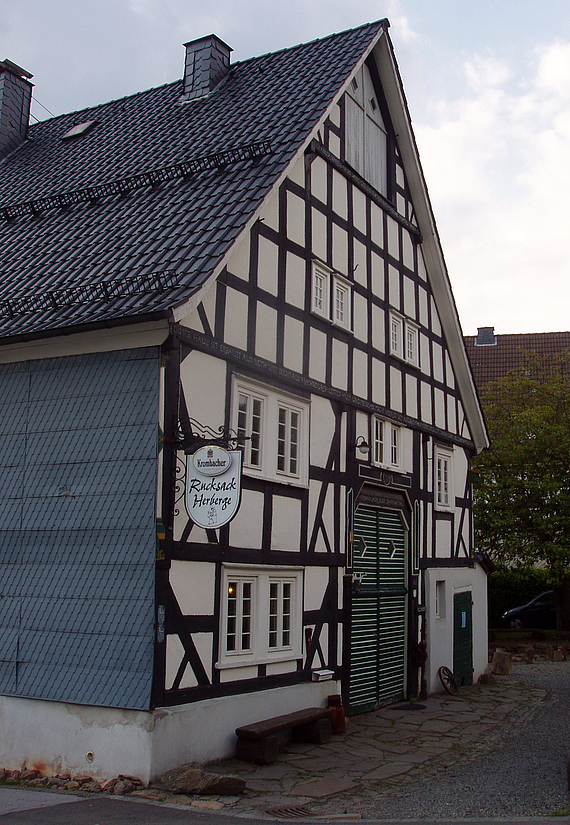
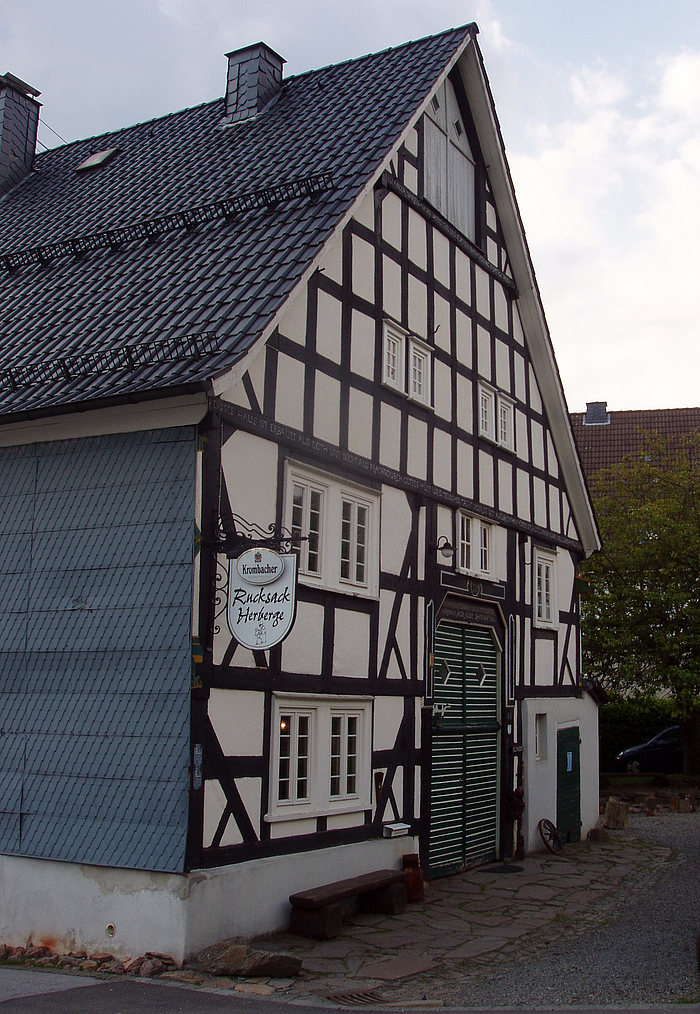
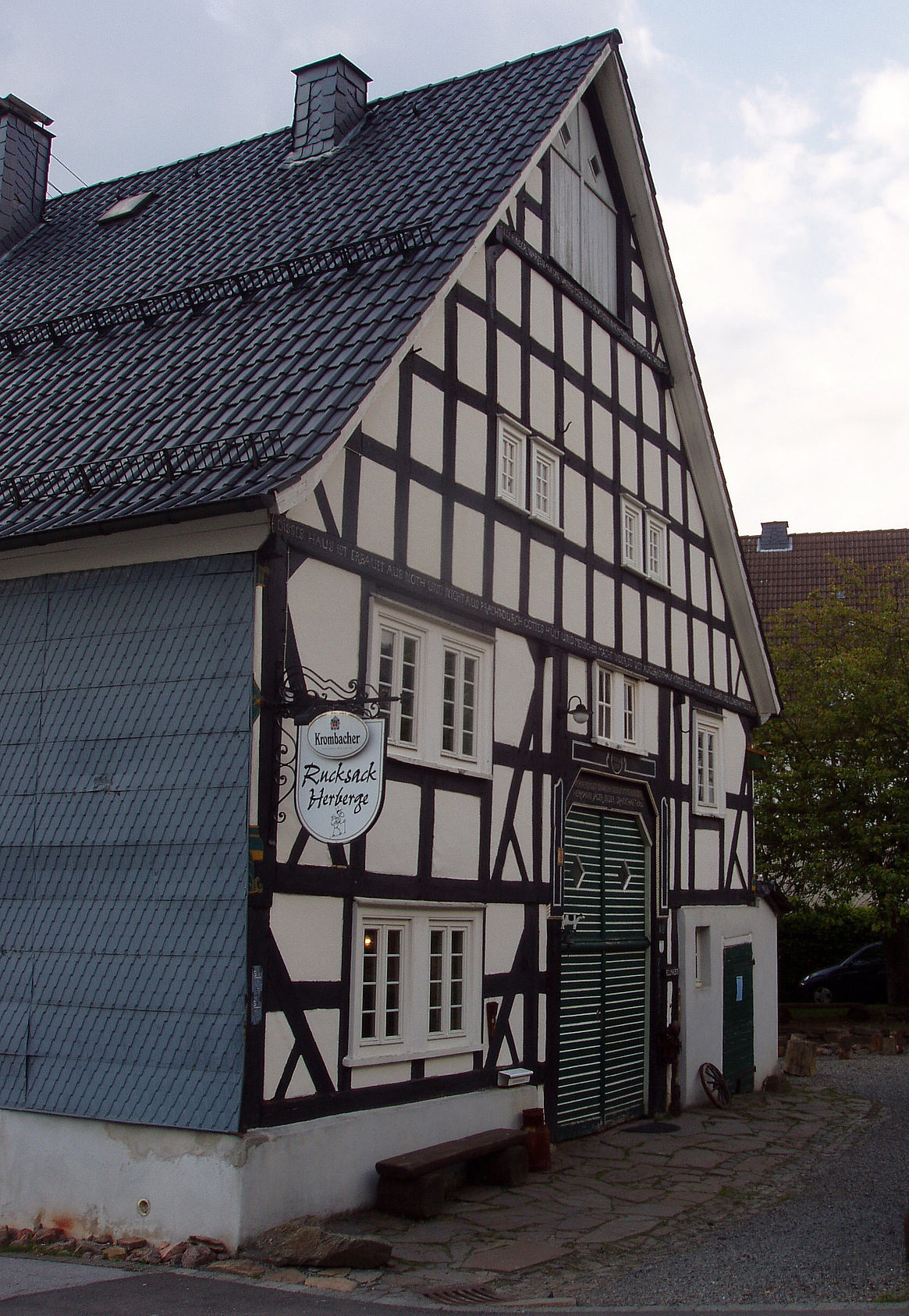




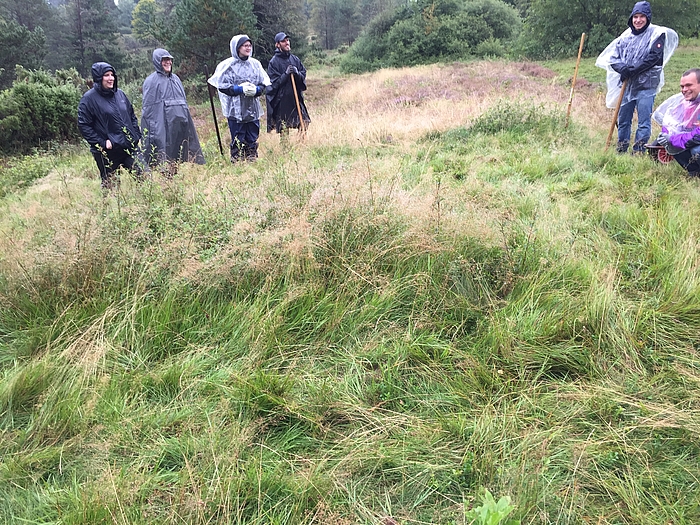


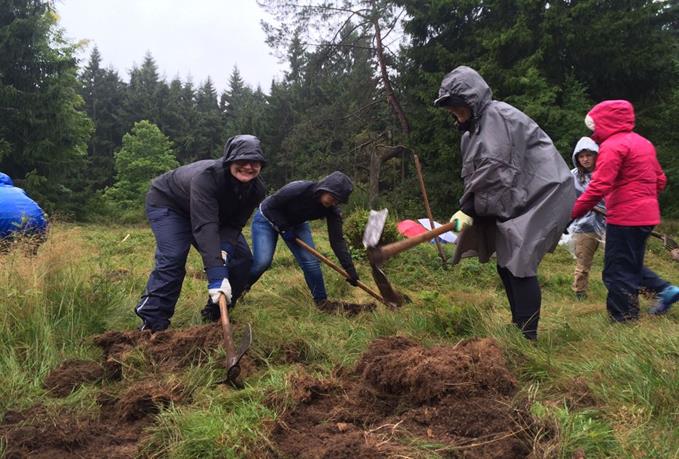

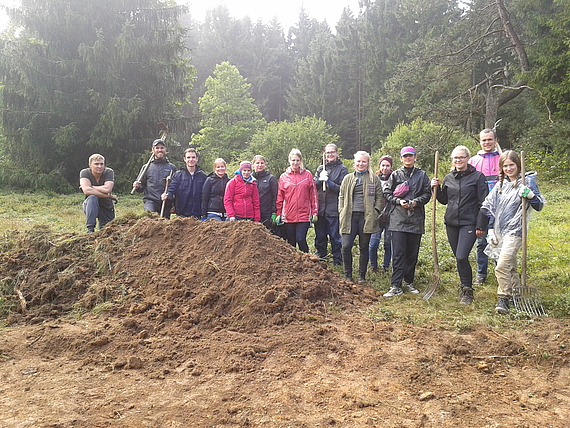
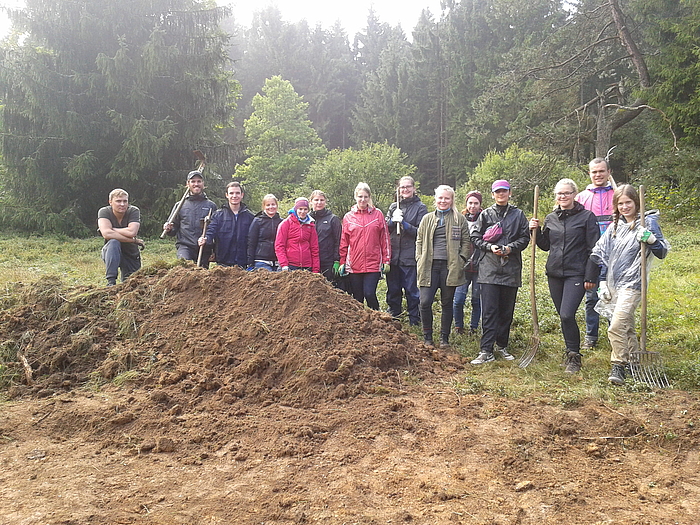
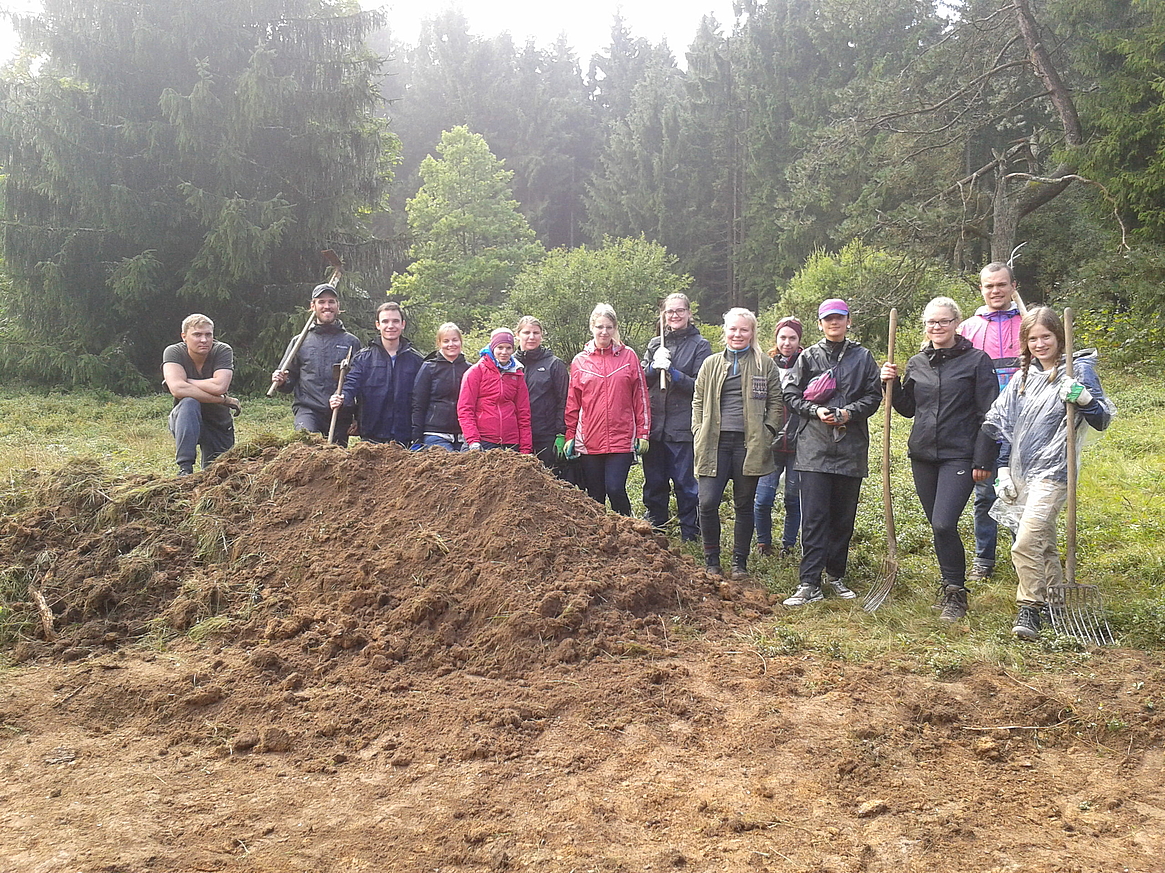



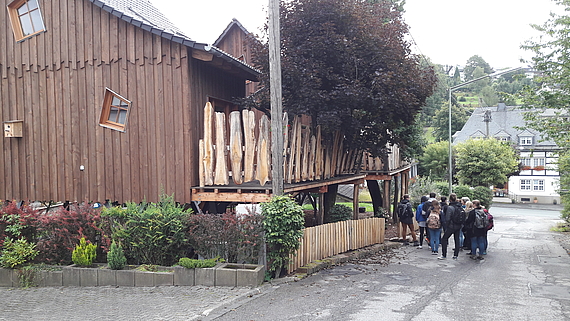
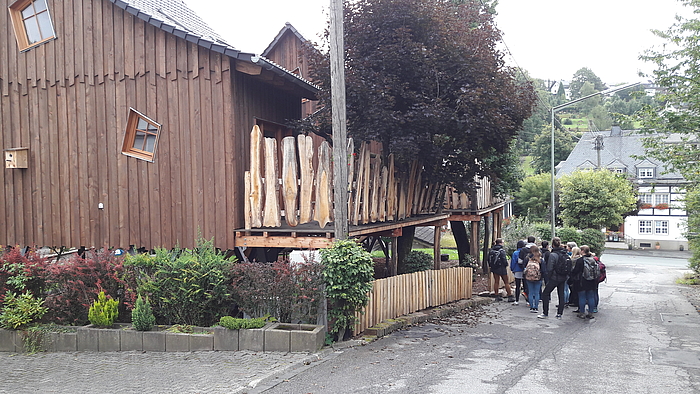
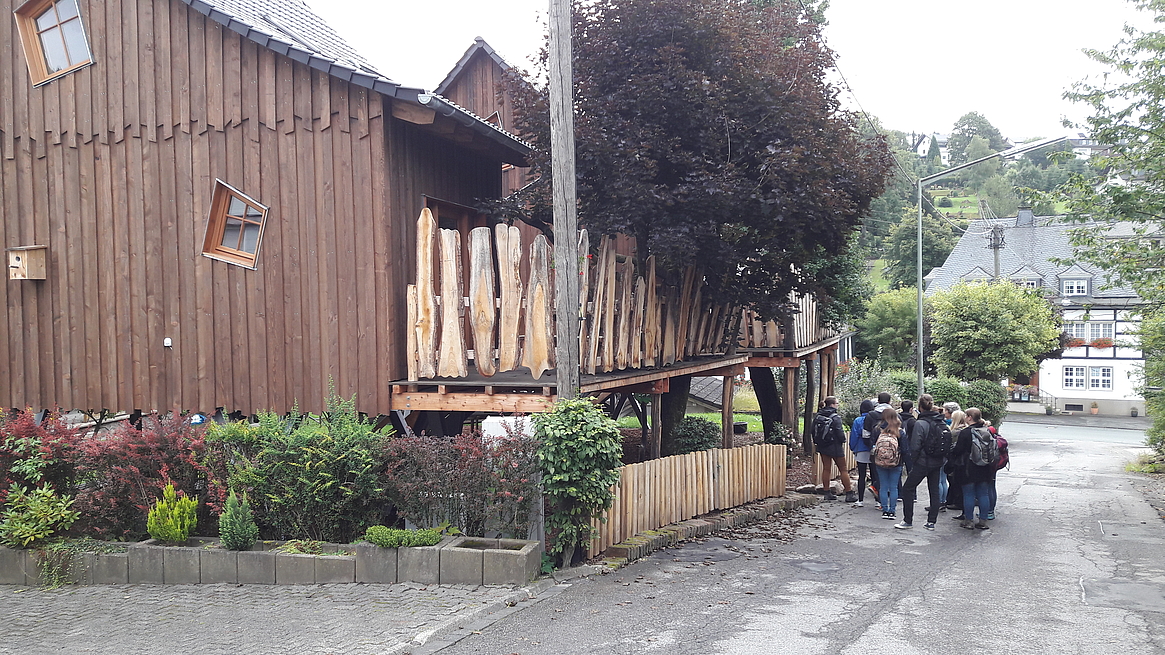
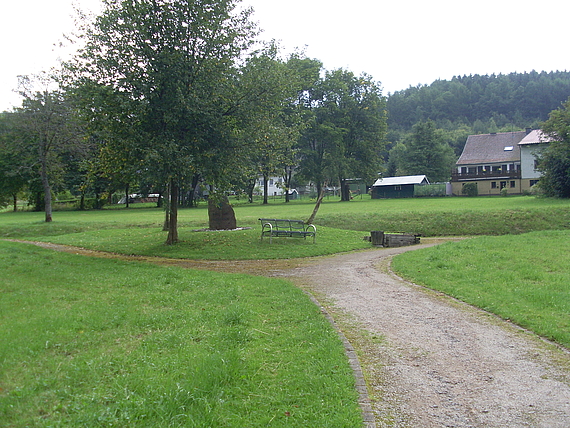


After the work had given everyone a sense of achievement, the group headed home, exhausted and soaked, but in good spirits, and visited Reinhard Flöper's radio museum at the end of the day. The museum is a component of the „Museumslandschaft Kreis Olpe“ , a network that aims to preserve the cultural heritage of the region and make it more accessible through currently 20 museums.
The tour of the radio museum was a unique experience. Mr Flöper showed an impressive number of radios and receivers, some dating back to the 1920s. He radiated an indescribable enthusiasm for his collectibles. He also presented, to the delight of the entire group, the functions of many devices and showed technical gadgets such as his own transmitter that could be played by several radios simultaneously. The museum owner entertained the visitors with products from his traditional garden: freshly picked tomatoes, a delicate apple pie and homemade berry wine were on the table.
After Wednesday's exertions, the group started a somewhat more relaxed day on Thursday. In the morning, they took the public bus to the climatic health resort of Oberhundem. There, a current resident guided the students through the baroque Adolfsburg Castle complex, which has been in private community ownership for several years and is therefore not normally open to the public. In addition to preserved historical structures in the exterior, the wall vegetation was of particular interest here. Wall joints and heads were examined extensively.
Along the new playground, built by the village community, and the recently erected tree houses at the inn „Zu den Linden“, the group went to the Haus des Gastes. Here the group started on a tour of the adjacent spa park, the upgrading of which was the content of a week-long task following the excursion. Through their own observation, the students gathered information on the use and ideas for improving the structure and maintenance of the park, which were expanded upon in a subsequent discussion with Oberhundem youths. Rather by chance, the group met the mayor of the municipality. He engaged in a short conversation and tried to answer the students' questions regarding nature conservation and rural development. Back in Heinsberg, the group spent the last evening in the cosy hostel.
Before departing on Friday, Mr Beckmann allowed a tour of the Heinsberger church and explained, among other things, the figures of the "Three Holy Madels", the popular saints Barbara, Katharina and Margarete. Inside and outside the church, the students recognised the similarities to the pilgrimage church on Kohlhagen, which is only 60 years older. With final kind words from the local historian, the group made their way back.
The journey to the station was interrupted for a final programme item in Albaum. Here, Albrecht Sandholz, chairman of the local heritage and promotion association, welcomed the group. He told them about the history of the village and about the fishery ecology department of the State Office for Nature, Environment and Consumer Protection (LANUV NRW). Afterwards, everyone explored the „Kleffweg“ together, which leads along a very steep forest slope and connects the two districts of Nieder- and Ober-Albaum. It has just been artistically decorated by graduates of the Maria Königin grammar school in Altenhundem.
The entire excursion group enjoyed their stay in the Sauerland very much. Apart from the many technically interesting topics, it was above all the people who surprised us again and again with their cordiality and friendly helpfulness.
Text: Jana Deppe & Fabius Marquard


